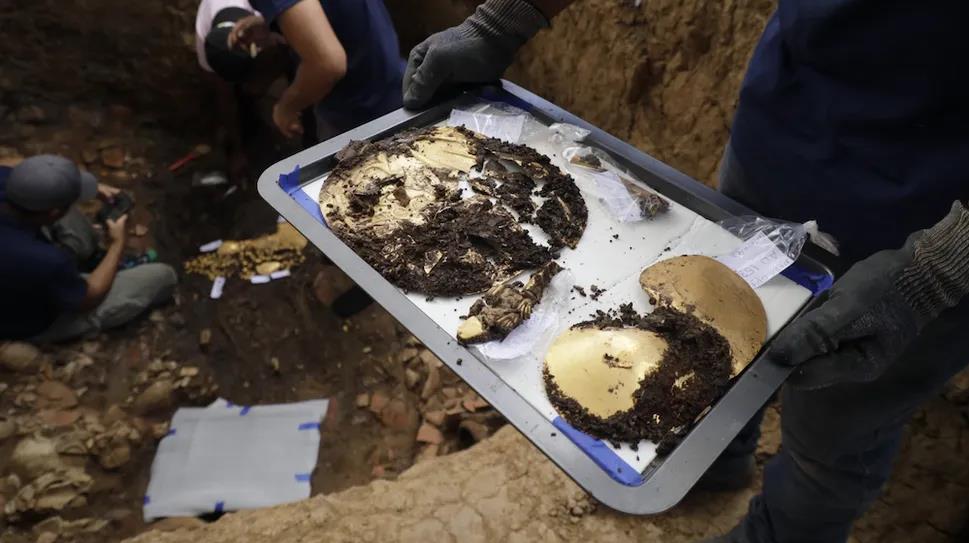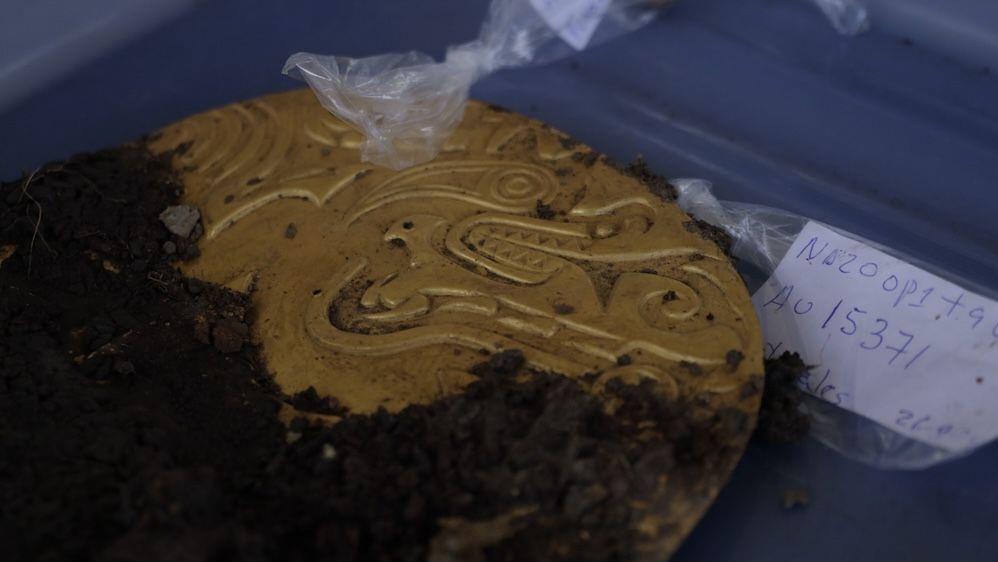Discovering a Lying Lord in a 1,300-Year-Old Tomb Filled with Gold
The discovery of a royal tomb in El Caño, an archaeological park in the province of Coclé, Central Panama, has unearthed an astonishing find. According to Live Science, this tomb is the resting place of an important “Coclé lord” who likely lived in the late 8th century and died at around 30 years of age. What makes this discovery even more intriguing is the fact that the lord was found lying face down, a peculiar burial custom in this region but unfamiliar to other cultures.

Photo: BỘ VĂN HÓA PANAMA
The Panamanian Ministry of Culture revealed that the tomb contained an impressive collection of burial artifacts, each crafted with valuable materials and intricate designs. Among the treasures were five gold breastplates, two belts studded with round gold beads, four bracelets, a pair of “fashionable” earrings depicting a man on one side and a woman on the other, crocodile-shaped earrings, a beaded necklace, a set of round gold plates, and two bells.

Photo: BỘ VĂN HÓA PANAMA
Additionally, the tomb contained five other earrings made from gold-plated fishbone, a set of bone flutes, bracelets, and dress-like accessories made from dog teeth. Excavations also yielded several ancient pottery artifacts.
Archaeologists are now delving deeper into the tomb to determine if there are other human remains present. It is common for tombs of this kind to include the burial of other individuals alongside the lord. These co-burials usually consist of at least one female and are placed beneath the noble figure, suggesting their role as companions or attendants in the afterlife.
Previously, another tomb filled with gold was discovered in El Caño, which had 25 different bodies arranged below the skeletal remains of a warrior.
El Caño was once inhabited by a society headed by Spanish descendants from the 8th century AD. By the year 1000, the area was abandoned, leaving behind remnants such as wooden structures and ceremonial stone constructions.
This remarkable find brings to light the rich history and cultural practices of ancient civilizations, shedding new insights into the lives and beliefs of our ancestors.
For more insightful articles on finance and economics, visit Business Today.
